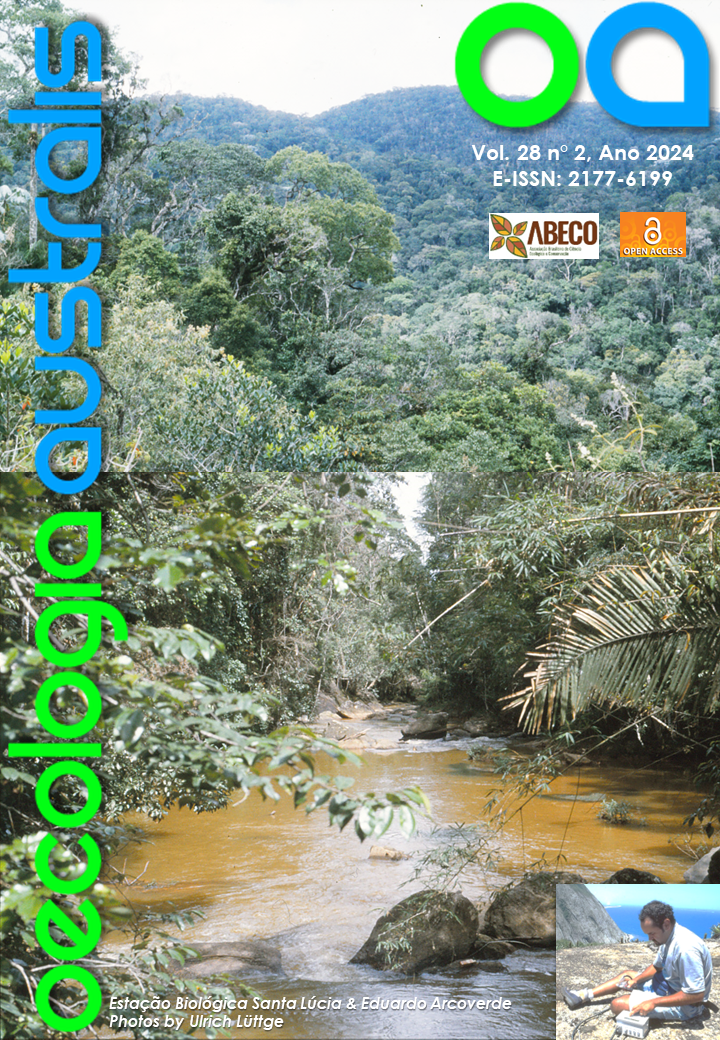PHOTOSYNTHETIC ADAPTATIONS AND NICHING OF PLANTS IN THE TROPICS: A QUARTER-CENTURY OF FIELDWORK AT A VARIETY OF PHYSIOGNOMIES OF THE CERRADOS AND ATLANTIC FOREST OF BRAZIL
Photosynthetic niching of plants at sites in Brazil: 25 years of field work
DOI:
https://doi.org/10.4257/oeco.2024.2802.01Abstract
For about 25 years the photosynthetic performance of plants has been measured at a variety of different types of vegetation physiognomies of the cerrados and Atlantic forests of Brazil. The results of all these 28 publications, at the great majority of which Eduardo Arcoverde de Mattos has actively and most inspiringly participated, are overviewed here. A plea is made for an approach of physiological synecology with comparisons between different habitats, between species within given habitats and between given species across different habitats. This is exemplified for habitats within the geographical coordinates of 15°44’ and 23°08’S and 47°53’ and 41°15’ W. The sites, their environmental characteristics and typical vegetation physiognomy, are described. The observations and results of the ecophysiological field work with respect to performance of photosynthetic gas exchange and other traits, including morphotypic adaptations, viz. plant morphotypes, and water relations, are summarized. The, both facilitating and competing, performances of plants with C3-photosynthesis, and different levels of expression of crassulacean acid metabolism (CAM) are evaluated. Diversity and plasticity of niches and species is considered. The consequences for a “post-modern-synthesis” of evolution theory are assessed.


